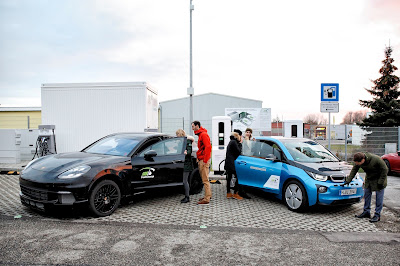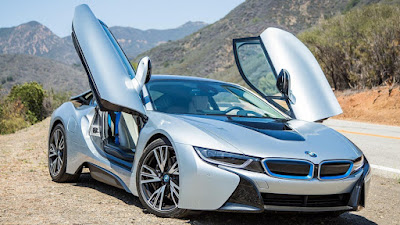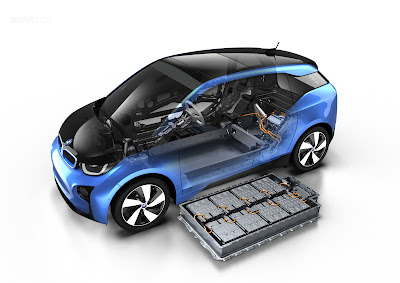Today BMW announced that BMW i will offer a new model range of its compact electric car, the BMW i3 and from the 2017 model year will be offering a new version with more than 50% increased battery capacity. The 2017 BMW i3 (94 Ah) has a capacity of 33 kilowatt hours (kWh) thanks to the higher energy density of the lithium ion cells.
The BMW i team worked to ensure that the battery dimensions remain unchanged while still offering a significant range increase. Even in everyday conditions, the new Battery Electric BMW i3, in varying weather conditions and with the air conditioning or heating turned on, a range of up to 114 miles combined1 (hwy/city) is possible as shown by independent BMW testing cycles. The driving performance figures of the 170 hp AC synchronous electric motor remain virtually unchanged. The motor propels the BMW i3 from 0 to 60 mph in just over 7 seconds.
This makes the BMW i3 both the sportiest and most efficient electric vehicle in its segment with an expected EPA electricity consumption of 27 kWh/100mi. In addition to the Battery Electric BMW i3, the Range Extender model will also feature the 94 Ah battery. When equipped with the Range Extender, if the driver requires additional range, the 2-cylinder gasoline engine is switched on once the battery is depleted to 6.5% state of charge and keeps the charge level of the battery constant while driving and provides an additional range thanks to a 25% larger fuel tank (2.4 gallons). With the introduction of the BMW i3 (94 Ah), BMW i now also offers a new BMW Home Charger Connect, a residential charging station designed for comfortable and fast home charging featuring additional connected functions. Pricing for the 2017 BMW i3 (94 Ah) will be released closer to market launch.
Higher storage density of the battery cells.
The BMW i3 (94 Ah) sets a new benchmark in its segment with 94 ampere hours (Ah) cell capacity, 33 kWh total battery energy, and an electric range of approximately 114 miles combined1 (hwy/city) on one full battery charge. Consuming only 27 kWh/100mi the BMW i3 is the most efficient car in its segment with the lowest electricity consumption costs of approximately 2.81 USD/100mi4.
The high-voltage battery of the BMW i3 consists of eight modules with twelve storage cells each and its capacity has increased by more than 50% without any changes in exterior dimensions. By optimizing the cell-internal packages with more electrolyte and adapting the active material, BMW and Samsung SDI have succeeded in increasing cell capacity to 94 Ah and overall battery energy to 33 kWh of which 27.2 kWh can be effectively used. The previous battery of the BMW i3 (60 Ah) produced 22 kWh (gross)/19 kWh (net).
The lithium ion cells used, set themselves apart in the competitive field by achieving a special balance between high energy density, cycle stability and safety in the case of an accident. The high-voltage battery also has an advanced thermal management system that keeps the battery operating in the optimal temperature range, which further enhances performance. For example, the coolant of the air conditioning system is responsible for cooling the high-voltage battery very effectively, while a heating system can also be used to warm the battery to ensure the optimal operating temperature before starting off. Customers receive an 8-year/100,000-mile High-voltage Battery Warranty.
The BMW i3 – a benchmark in terms of sustainability
During the development phase of the BMW i3, the entire architecture of the electric drivetrain was designed with the next technological steps as well as serviceability in mind. For example, if necessary a single battery module can be exchanged which distinguishes the BMW i3 from other competitive offers and represents an integral component of the holistic BMW i concept of sustainability. From the production stand point, sustainability is achieved to a large extent through the CO2 free electricity supply of the BMW i production sites in Leipzig (assembly) and Moses Lake (CFRP production) as well as through the use of 70 percent less water in the production process compared to conventional automobiles.
Optimized performance delivery, more efficient drive.
The BMW i3 is by far the lightest car in its segment. Despite the slight weight increase, at 2,961 lbs (BEV), and 3,234 lbs (REX), the BMW i3 (94 Ah) is characterized by driving performance, which is subjectively as agile as the 60 Ah model variant. The BMW i3 (94 Ah) is also powered by the same 3 phase AC synchronous electric motor developed in-house by the BMW Group. The motor generates an output of 170 hp and delivers 184 lb-ft of torque which is available as soon as the electric motor begins to turn. The BMW i3 (94 Ah) accelerates from 0 to 60 mph in just over 7 seconds. The impressive electric motor, small turning circle of 32.3 feet, – a major benefit to driving in the city – BMW’s near-perfect 50- 50 weight distribution, precise electric power steering and the stable suspension set-up help to make the i3 as satisfying to drive as every other BMW.
The sporty character of the BMW i3’s electric motor is also clearly noticeable by its performance figure of 5.1 seconds accelerating from 50 to 75 mph. This is a decisive factor for enabling fast and safe passing maneuvers, and is normally only achieved by combustion engine powered cars with considerably higher outputs. The BMW i3 (94 Ah) is close to the level of cars such as the (320 hp) BMW 340i. Power is transmitted to the rear wheels via the single-speed transmission, which the BMW i3 uses to accelerate without torque interruption to its electronically limited top speed of 93 mph.
The electric consumption of the BMW i3 (94 Ah) has also been reduced by a large number of detail improvements including revised electric motor management as well as advanced low-resistance tires with optimized compound.
Charging times.
The 7.4 kW charging electronics of the BMW i3 (94 Ah) can charge the 33 kWh battery in approximately 4.5 hours using a Level 2 charger, which is slightly more than the approximately 3.5 hours required to charge the battery on a BMW i3 (60 Ah). Standard equipment of the BMW i3 includes the occasional use cable for connecting it to a domestic power socket. Core elements such as range, hallmark BMW agility thanks to low weight and overnight battery charging remain in place.
The BMW i3 is equipped with the future-proof 50 kW direct current (DC) fast charging technology. When the BMW i3 (94 Ah) is connected to a DC fast charging station, the battery cells are charged up to a minimum of 80 percent of their capacity in less than 40 minutes. In the BMW i3 (60 Ah) this takes around 25 minutes. This means that the BMW i3 (94 Ah) achieves a charging speed of 2.5 mi/min which corresponds to 24 minutes charging time per 62 miles of range.
Range Extender for even greater range.
BMW i also offers a Range Extender for the BMW i3 (94 Ah).The range of the BMW i3 is extended by a 650 cc 2-cylinder gasoline engine which is located adjacent to the electric drive above the rear axle. The Range Extender engine delivers a maximum output of 38 hp and powers a generator in order to produce electricity, working on a required-based and highly efficient principle. For those occasional times where additional range is required, as soon as the charging level of the lithium ion batteries drops to a specified level, the Range Extender kicks in to keep the charging level constant effectively extending the range. Fitting the car with the Range Extender has no influence on the available luggage volume: the luggage compartment volume remains unchanged at 15.1 ft3 and can be extended to 36.9 ft3 with the rear seats folded down. The BMW i3 (94 Ah) now features a 2.4 gallon fuel tank improving the range from the previous model.
The BMW i3 (94 Ah) with Range Extender weighs approximately an extra 270 lb compared to the Battery Electric BMW i3 but is also characterized by a high level of agility and offers impressive performance figures. It accelerates from zero to 60 mph in just 8 seconds.
New equipment on the BMW i3.
The BMW i3 (94 Ah) is now available in the exclusive Protonic Blue metallic exterior color, previously only available in the US on the BMW i8. The BMW i3 (94 Ah) customer can also choose from two non-metallic paint colors (Capparis White and Fluid Black) and, in addition to Protonic Blue, three metallic paintwork colors (Mineral Grey, Platinum Silver and Ionic Silver).
The Deka World is now part of the standard profile of the BMW i3 (94 Ah) and features a lightweight dark cloth fabric interior made from recycled materials. Other changes to the standard profile include the addition of the Universal Garage Door Opener, Advanced Real- Time Traffic Information, and Comfort Access. As part of the Tera World, a Dark Oak Wood trim is also now included, with an alternative Light Eucalyptus Wood trim available as well. These trims are also available for ordering with the Giga World.
The highly anticipated electric moonroof is also available for ordering for the first time in the US. This option features individual shades and adds to the great set of convenience features that the BMW i3 has to offer.
Standard profile and equipment for the BMW i3 (94 Ah) includes: Automatic climate control, Dynamic Cruise Control, LED Headlights, HD Radio, DC Fast Charging, Navigation Business System, BMW Assist and BMW Teleservices. Other standard features include: the iDrive operation system, the BMW i RemoteApp functionalities, the Driving Dynamic Control switch, hands-free telephone operation, leather steering wheel and Park Distance Control (PDC).
BMW i3 – a success story.
The BMW Group took on a pioneering role when it founded the BMW i brand and decided to develop an independent vehicle structure and passenger cells made of carbon fiber reinforced plastic (CFRP) as well as BMW eDrive technology for a purely electric drive. The BMW i3, which was designed for local emissions-free urban mobility, as well as the trail- blazing BMW i8 Plug-in-Hybrid sports car combined with sustainability-oriented premium character. Since the November 2013 launch, the BMW i3 has already established itself at the top of its segment. The most important single market for the purely electric five door BMW i3 is the U.S. More than 80 percent of buyers deciding on a BMW i3 worldwide are new customers for the BMW Group. The BMW i3 and the BMW i8 received a large number of awards for innovations in the areas of lightweight construction, drive, sustainability, driving performance and design. This makes BMW i the brand to win the most awards in the world during its market launch phase.
Comfortable home charging: the new BMW Home Charger Connect. In late 2016, BMW i will be offering the new BMW Home Charger Connect, a residential charging station designed for comfortable and fast home charging. The new BMW Home Charger Connect, with a more compact, sleeker design, charges the battery of the BMW i3 (94 Ah) in approximately four hours and 30 minutes. The charging process starts automatically as soon as the car and charging cable are connected. The BMW Home Charger Connect is operated using an LED interface.
The BMW Home Charger Connect comes standard with WiFi and will feature innovative charging services which can be accessed remotely. This charger helps preserve vehicle range as it can precondition the vehicle battery when connected.
On the go: convenient public charging with ChargeNow.
ChargeNow is designed to optimize the public charging experience for BMW i customers, for easy access to public charging options. Thanks to ChargeNow’s partnerships with leading public EV charging network providers, BMW i drivers enjoy convenient access to public chargers along the way. Learn more at www.chargenowusa.com.
ChargeNow DC Fast5: Eligible BMW i3 drivers can recharge for no charge.
Offered by BMW in cooperation with EVgo, ChargeNow DC Fast allows eligible BMW i3 drivers in participating markets to enjoy 24 months of no cost charging sessions for the BMW i3 at participating EVgo Stations. Enrolled BMW i3 customers can use the ChargeNow card for unlimited 30 minute, DC Fast Combo charging sessions and Unlimited 1 hour, Level 2 charging sessions.
The BMW i3 is equipped with the future-proof 50 kW direct current (DC) Fast charging technology. When the BMW i3 (94 Ah) is connected to a DC Fast charging station, the battery cells are charged up to 80 percent of their capacity in less than 40 minutes. In the BMW i3 (60 Ah) this takes approximately 25 minutes.
ConnectedDrive: Setting standards through Connectivity.
The optional Navigation System Professional provides BMW ConnectedDrive Services especially developed for BMW i. The range assistant follows the planned and currently driven route. If the destination selected in the navigation system is beyond the car’s range, the driver receives the suggestion to shift to the ECO PRO or ECO PRO+ mode. Additionally, the system calculates a more efficient alternative route. Should it be necessary to recharge at a public charging station, the driver is shown all the available stations along the planned route.
A dynamic range map is another central element of the connected navigation unit. Apart from the current charging status of the battery, the driving style, the activated electric comfort functions and the selected driving mode, the topographic features, the current traffic situation and the outside temperature are all taken into consideration. The Advanced Real Time Traffic Information (ARTTI) data is used for this purpose. The data is provided by the BMW ConnectedDrive Server.
The BMW i3 also sets standards when it comes to connecting driver and car. The BMW i Remote App provides useful vehicle-related mobility planning data available on the customer’s smartphone. Apart from pedestrian navigation; navigating your way to your destination from the parking space and back, BMW ConnectedDrive offers a so-called intermodal routing system and for the first time in combination with the Navigation System Professional. This also incorporates public transport connections such as subway stops if this means you can reach your destination quicker. From the actual trip in the BMW i3, looking for a parking space, changing onto a metro and or a walking route, the BMW i ConnectedDrive services take the customer to his destination efficiently.



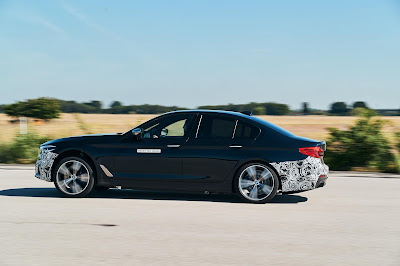
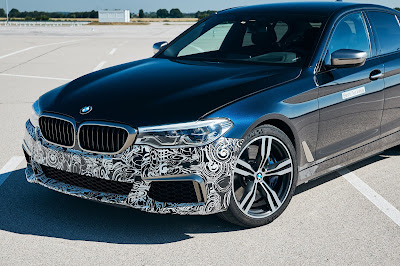




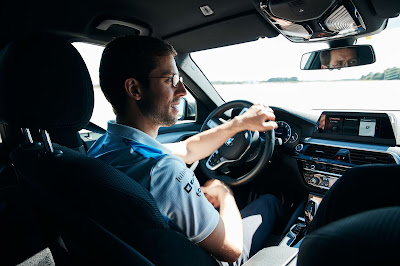




 Although the gigantic new twin-kidney grille might be the most eye-catching addition to BMW’s flagship luxury sedan, the 7-Series, the model in the lineup that’s gone through the most change might well be the one with a charge port: the 745e xDrive plug-in hybrid. The 2020 BMW 745e xDrive iPerformance can go 16 all-electric miles...
Although the gigantic new twin-kidney grille might be the most eye-catching addition to BMW’s flagship luxury sedan, the 7-Series, the model in the lineup that’s gone through the most change might well be the one with a charge port: the 745e xDrive plug-in hybrid. The 2020 BMW 745e xDrive iPerformance can go 16 all-electric miles... 
